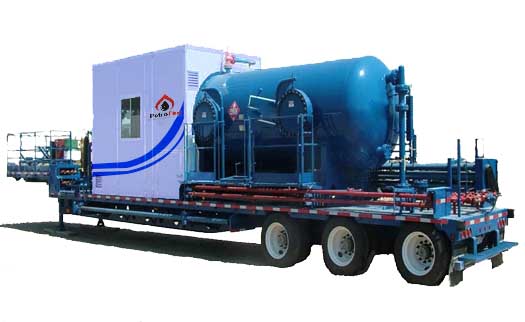Temporary production facilities
Drilling Services Menu
Temporary production facilities
Temporary gas-oil separation facilities are associated with newly drilled or newly side-tracked wells where the production potential of the well is being assessed. They are also used as alternative temporary facilities during a refinery / process plant shut down.
The plant, comprising a test separator vessel, is connected to the well head after the choke valve. The separator allows the fluids to separate by gravity into its component phases: solids such as sand (the densest phase) settle to the bottom of the separator, then produced water and oil which are drawn separately from the base of the separator, and vapor or gas (the lightest phase) separates to the top of the separator vessel from where it is withdrawn. Each of the three fluid phases is metered to determine the relative flowrates of the components and production potential of the well.

In temporary facilities the vapor is generally flared; produced water is disposed of after treatment to reduce its oil content to statutory levels; and the crude oil phase may be diverted to tote tanks for removal and treatment. Alternatively, if the temporary GOSP plant is associated with a permanent production facility the oil phase may be treated in the installation’s permanent gas-oil separation plant.
